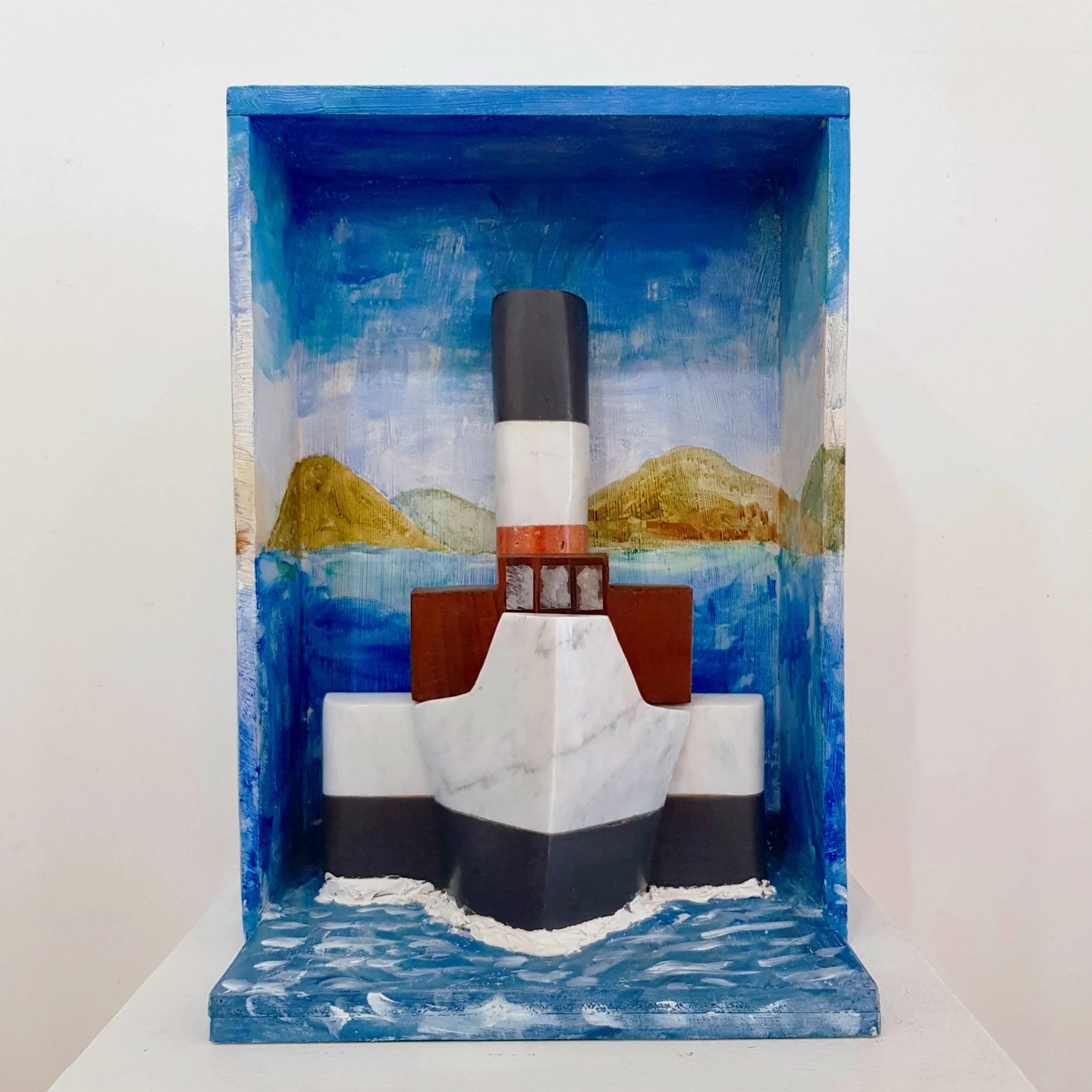Jonathan Meades’ Pocket Treasure
24 February 2022
Writer and film-maker, Jonathan Meades tells us about a work of art with particular meaning to him - the next instalment of our series looking at different people’s ‘pocket treasures’.
Joe Lloyd
Joe Lloyd is a journalist who writes about architecture and visual art for The Culture Trip, Elephant, and The Economist's 1843 magazine, among others.
Duggie Fields, Diana.
Image courtesy of Jonathan Meades.
Jonathan Meades’ office is furnished with all sorts of images. “There’s two things by myself,” he explains, “and some stuff by a friend of mine called Andrew Curtis. Just outside my office there’s a self-portrait by Claes Oldenburg and a piece by Ed Burra, who I very much rate.”
There are also myriad objects, including an abundant collection of postcards; Meades once called postcards “mute, unselfconscious social-historical documents, bland emblems of the everyday whose value will not be recognised for years hence.” And there are about 20 ceramic night lights designed in imitation of marine life, produced in Vallauris, near Antibes. “They were,” says Meades, “an art pottery who tried to go very commercial in the 50s and 60s with these children’s nightlights, which mostly have a piscatorial theme. It's absolutely kitsch. There's a very, very fairground feel. And I like fairgrounds. They're great fonts of delight and horror.”
A different icon of kitsch presides over Meades’ sitting room, in Le Corbusier’s Cité Radieuse: the fleshy-pink face of Lady Diana Spencer. “I have to say I have no interest in the Royal Family, or the marriage of Charles and Diana, or any of them. But it is the image that interests me, not the subject.” The minute painting is the work of the late Duggie Fields (1945 - 2021), one of the most distinctive figures in modern British art, design and fashion.
It captures Diana during her infamous 1995 interview with the BBC journalist Martin Bashir, clad in a blazer over a white top. The Princess’ feathered shag is translated into canary yellow with splashes of green. Her flesh exhibits the pink of a charcuterie platter. If there is a single focal point, however, it is Diana’s eyes. “He gets her at just the right point,” explains Meades, “where saying ‘there were three of us in this marriage’. And then there’s a particular roll of the eyes which he gets. And which seems to sum her up.”
Meades and Fields met in the 1960s, while students at RADA and the Chelsea College of Arts respectively. Both men began their lives in Wiltshire, moving to the capital in the 60s. Fields was galvanised by the era’s creative ferment, in art, fashion and music. He became part of a circle including fashion designer Zandra Rhodes, artist and performer Andrew Logan and painter Kevin Whitney. His Earls Court studio-cum-apartment, which Fields initially shared with a post-Pink Floyd Syd Barrett, was a meticulously designed art work of its own. It featured in two Derek Jarman shorts. In 2018, it was recreated as an exhibition at The Modern Institute in Glasgow.
Duggie Fields, at The Modern Institute, 14—20 Osborne Street, Glasgow, April - June 2018.
Image courtesy The Modern Institute.
When Fields died from cancer last year, he was admiringly obiturised. But this respect was a long time coming. As Meades explains: "There was from the post-war period a prejudice against figurative art of any kind. And the anti-figurative bias was promoted in all sorts of odd ways, not least by the CIA through ownership of the magazine Encounter, and being judge and jury over what was culturally valid and was invalid.” One way was through teaching: at college, an argument with a tutor saw Fields unpin a Donald Duck badge from his jacket and use it to puncture the abstract painting he had been working on.
Fields soon developed his own metier outside the academy. Figures from music, films and the history of art recreated flat blocks of colour and thick black lines, a melange of the Pop and the Surreal. “Even though he was outside the norms of what gets written about by art critics, there is a particular tradition which he belongs to,” says Meades, “which notably includes Valerio Adami and Patrick Caulfield, who taught him for a while.” Adami’s oeuvre is littered with amputees and half-formed torsos; Fields chopped off Marilyn’s Head and pulled off Donald Duck’s arm. Fields’ work finds a giddy joy in cutting, copying and painting, like that of the two Maries in Vera Chytilová’s Daisies.
The critics approached his art with upturned noses. Brian Sewell called him “a painter of whom no-one should take the slightest notice”. But Fields continued to develop his idiosyncratic art, which grew to encompass mass-produced trinkets and digital animations. “I was slightly miffed on his behalf”, says Meades, “that he wasn’t really taken seriously, because his work was extremely decorative and maximalist — that was the world he used. And it would go completely against what has been fashionable for the past half-century. So I felt a kind of kinship with him. My work tends to be maximalist.”
Fields bore art world neglect lightly. “Howard Hodgkin said,” explains Meades, “that it was remarkable that he stuck doing the same thing. Very very few people have. Most people give up eventually.” Meades also possesses a large canvas by Steve Walton, a contemporary of Fields at Chelsea who was laughed at by his teachers and eventually stopped painting. “But Duggie didn’t. He did have a kind of stubbornness. He was a quite obstinate person, though he disguised it with a smoothness. But he was very determined.” Perhaps there are parallels here with Fields’ subject Diana; perhaps not. But it is a blessing that Fields continued to expand his unique visual world.













